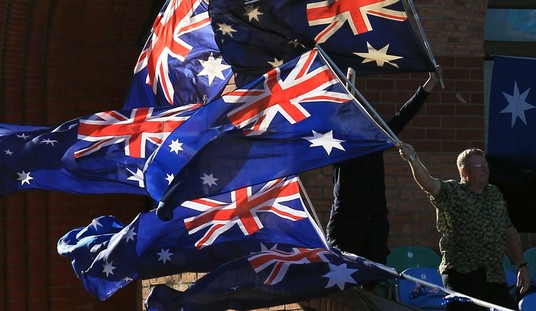Meir Har-Zion, an iconic Israeli military figure, died at 80 on March 14. He never pursued a political career and you probably haven’t heard of him. Indeed, his military exploits were mostly confined to a three-year period in the 1950s. Yet his fame in Israel never wore off, and a 2005 poll ranked him 15th out of the 200 greatest Israelis of all time.
Moshe Dayan—another iconic Israeli figure who was a chief of staff, defense minister, and foreign minister—called Har-Zion “the finest of our commando soldiers, the greatest Jewish warrior since Bar Kochba,” referring to the leader of the 2nd-century-CE revolt against Rome. It was Dayan who had Har-Zion appointed an officer even though he had never undergone officers’ training.
In eulogizing Har-Zion, current defense minister Moshe Yaalon called him “one of the greatest warriors in the history of the IDF—an audacious, distinctive commander whose influence in molding generations of fighters and units was pivotal.”
He was born Meir Horowitz in 1934 in the coastal town of Netanya, fourteen years before the prestate Jewish community declared its independence as the state of Israel. His parents divorced—rare in those days—and he moved with his father to a kibbutz in northern Israel.
I cannot find whether it was Meir or his father who changed the name from Horowitz to Har-Zion. In those days in the Land of Israel, trading in a Diaspora name for a Hebrew one was very common. Har-Zion, however, means “Mount Zion” and was even then a particularly resonant, ideological name. It turned out to be very fitting for Meir.
In those days, hiking up and down the ancestral, biblical land was hugely popular and often dangerous. It’s still very popular today—and if done in certain areas and without precautions, can still be quite dangerous.
In those early days, though, hiking was more ideologically charged and also had elements of daredevil defiance. Meir was fond of it from a very young age. He was also fond of, and quite close with, his sister Shoshana—three years younger.
In 1951, when Meir was 17 and Shoshana 14, he took her for a hike along Lake Kinneret (the Sea of Galilee) and veered toward its eastern shore, then part of Syria. Indeed, they were caught by Syrian soldiers and spent a month in a Syrian prison; it took UN and Red Cross intervention to get them out. Meir later recalled, “The interrogators asked me questions I didn’t know how to answer. They beat my feet. It was very painful.”
One might think that would have soured him for good on sneaking into Arab countries, but one would be dead wrong. Not long after, in 1952, Har-Zion and a friend named Rachel Savorai stole into Jordan, made it to the ancient “red city” of Petra, and returned.
It became a famed exploit, and for Israeli teenagers of the time, getting to Petra and back became a cool thing to do. But not all of them made it; some sources say as many as twelve were killed attempting the furtive hike in Jordan.
Meir Har-Zion enlisted in the Israel Defense Forces in 1953 and ended up in a large infantry brigade. Probably bored, after a few months he joined a new commando unit. It had been created by a major named Arik Scheinerman, who later changed his name to Ariel Sharon (pictured above with Har-Zion), and it was engaging in constant combat operations. Har-Zion, clearly, had a taste for adventure and the new unit suited him well.
It was Unit 101, which existed for only five months but has gone down as one of the IDF’s most legendary outfits. In those days Israel, squeezed into tiny, indefensible borders, was under constant terrorist assault. It was long before the era of satellite reconnaissance and drone strikes, and Unit 101 carried out fierce, daring retaliatory raids on foot, deep in Jordanian territory. Not long after its controversial Qibya raid in October 1953, which caused high civilian casualties in a Jordanian village, 101 was disbanded and its troops merged into the Paratroopers Brigade.
It was during those months in 101 that Har-Zion first made his mark as a soldier of incredible courage and fortitude. Still very young and not far from his days as a raw recruit, he was made a de facto officer and commanded detachments that were usually commanded by fully commissioned officers of much higher rank.
On December 23, 1954, Shoshana Har-Zion, Meir’s sister, went on a hike with a friend named Oded Weigmeister in the Judean Desert, then Jordanian territory. They were taken captive and murdered by members of a Bedouin tribe.
Meir, distraught, temporarily quit the army and vowed to take revenge. Moshe Dayan, then chief of staff, tried to talk him out of it but to no avail. On March 4, 1955, Meir along with three ex-101 members went to the same area, captured five Bedouin from the same tribe, and killed four of them, sending the fifth back to the tribe to tell the story.
It became known as the Har-Zion Affair. Upon returning, Meir and his companions were detained and put in a military lockup. After twenty days, Prime Minister David Ben-Gurion, along with Dayan, intervened to have them released. They were banned from the army for six months, then allowed to rejoin.
The fighting in those days was savage, and Israelis were understandably ready to do whatever it might take to stop the terrorism. The young Jewish state’s ethos and moral standards had not yet crystallized, and some of its fiercest fighters were influenced by the surrounding ethos. It was not pretty and in some cases not justifiable, though it may not have been possible for it to be much different.
During fighting in Jordanian territory in September 1956, Har-Zion was severely injured. An army doctor saved his life by performing a tracheotomy on the spot.
After that Har-Zion had to be discharged from the army, but he did not leave it. Behind the scenes, he helped found and train the fabled Sayeret Matkal (General Staff Reconnaissance Unit), whose graduates included future prime ministers Ehud Barak and Binyamin Netanyahu. In the 1967 Six Day War, Har-Zion volunteered for duty and, though having only one usable hand, killed a Jordanian sniper with hand grenades in Jerusalem. In the 1973 Yom Kippur War he was back again, rescuing wounded soldiers on the Golan Heights.
Meanwhile Har-Zion used his disabled-veteran funds to create and build Ahuzat Shoshana (Shoshana Ranch), a successful cattle ranch high on a hill in the Jordan Valley. More a man of action than of words, apart from publishing his memoirs in 1969 he was generally quiet. In 2005, when Har-Zion’s old comrade-in-arms Ariel Sharon, then prime minister, carried out a withdrawal from Gaza and part of Samaria, Har-Zion took to the media and bitterly criticized the territorial concessions and destruction of settlements.
Meir-Har Zion was survived by his sister Rachel, his wife, four children, and thirteen grandchildren. After the very stormy early part of his life, he lived peacefully for decades in a beautiful, pristine reach of his beloved Land of Israel. Even with his flawed legacy he is the stuff of myth and legend, one of the individuals who were integral to the rise of the modern Jewish state in a harsh environment.













Join the conversation as a VIP Member